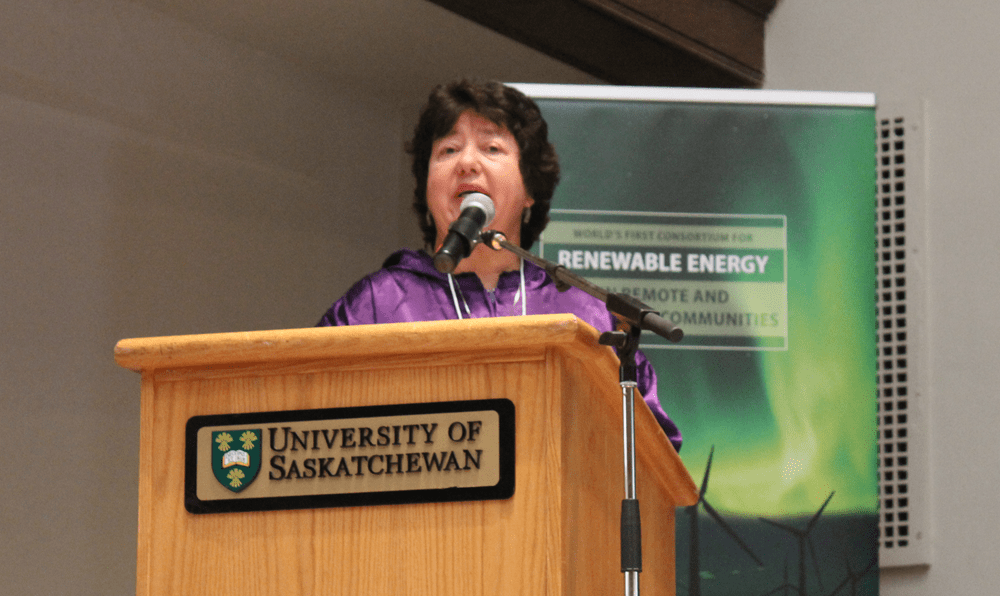Capitalizing on Regional Strength
Most of us take electricity for granted. But for remote northern communities without roads, built on tundra and far from neighbouring towns, procuring a stable source of power isn’t easy.
Investor-driven utility providers generally can’t justify the low, slow return on the large investment in rural and remote infrastructure, which means they often won’t build in these areas. Similarly, a government-led solution may not be palatable for those preferring an option.
So, how do community leaders looking to improve their remote communities’ quality of life through power infrastructure create regional capacity and an opt-in solution for potential power consumers? The answer is co-ops.
Co-ops have long been an effective way to provide electricity to rural areas. Alberta’s Rural Electrification Associations (REAs), for example, were built and used by Albertan farmers and rural residents, and they led to wide spread power infrastructure in rural Alberta early last century.
Their legacy lives on through organizations, like Alberta Federation of Rural Electrification Associations (AFREA), and businesses, such as Battle River Power Co-op, but also in the fact that rural Alberta has electrical infrastructure now.
In Alaska, where many remote communities are difficult to access, the Alaska Village Electric Co-operative (AVEC) has been providing electricity to this geographically large, but sparsely-populated state for decades. Currently, AVEC supplies power to 58 communities spread over the largest service area of any retail co-operative in the world.
Meera Kohler, CEO of AVEC, said the co-op model has been embraced as the most practical solution to electrification in rural and remote areas.

AVEC CEO Meera Kohler presenting at the “Renewable Energy in Remote and Indigenous Communities” symposium at the University of Saskatchewan, September 5, 2017
“In rural America, you would have to run a wire a few miles for a single customer, and they wouldn’t be using enough electricity to justify the cost of that capital investment,” said Kohler, “so there was no interest on the part of investor-owned utilities to serve those areas.”
The flexibility of the co-op model allows community leaders to centralize governance and resources, which increases regional purchasing capacity.
“I think what [the co-op model] brings is regional strength,” Kohler said. “If you look at the size of our villages and kilowatt hour sales, a village can’t possibly afford to pay for an administrator, a bookkeeper, and a meter reader, a lineman, two mechanics – there’s no way. So, what we bring is an amalgamation of all of those resources.”
The model has worked. AVEC has been operating for 50 years, transporting fuel to communities by barge or airplane as only one of its communities is accessible by road.
Over time, it’s also produced returns. Each year the co-operative earns a margin of revenue, and retains most to use as working capital. But, when feasible, the co-op distributes ‘capital credits’ back to its shareholders based on the amount of energy they purchased during the year. In 2016, AVEC returned $1.7 million to its shareholders (about 1/15 of retained revenue).
Challenges remain, of course. The amount of power generated by small plants is low, the fuel cost is high, and though the co-op would like to use more renewable sources of energy, the technology for wind and solar is still prohibitively expensive to use at utility capacity.
Despite these challenges, the co-operative has been a reliable way for people in a remote region to power their houses and businesses since 1968.
“We’re not profit-motivated; we have an obligation to serve; and we care about the end result,” said Kohler.
This focus on shareholders, smart decision making and the communities they operate in has helped the business increase the quality of life for their members and survive despite the challenging conditions they operate in.
Love the story of the Alaska Village Electric Co-op? Learn about how other energy co-ops are benefiting their homes.



